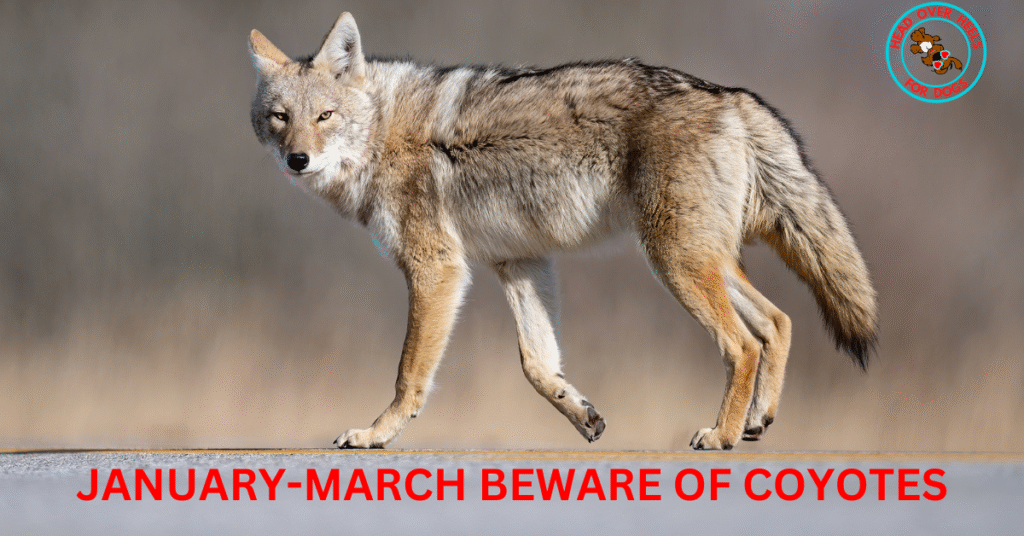Rabies is a dangerous disease that can quickly turn our beloved pets into aggressive, uncontrollable animals. This viral disease poses a serious threat to both dogs and humans, as it can be fatal once contracted. Rabies has been feared for centuries and continues to be a health threat globally, even in regions where it’s well-controlled. In this blog post, we’ll explore rabies in dogs, focusing on its causes, symptoms, treatments, and, most importantly, prevention.
*Disclaimer: This Post May Contain Affiliate Links. This Means That I Receive A Small Commission At No Extra Cost To You Should You Click Through And Make A Purchase. Learn More On My Policy Page
What is Rabies?
Rabies is a viral disease caused by the rabies virus, which belongs to the Lyssavirus genus.
The virus is typically transmitted through the saliva of infected animals, usually through a bite, but it can also spread through scratches or open wounds if they come into contact with infected saliva.
Common carriers of the rabies virus include wild animals such as:
- Bats
- Raccoons
- Foxes
- Skunks

However, domestic animals like dogs and cats can also become infected.
Once the virus enters the dog’s body, it moves along the nervous system to the brain, where it causes severe and often irreversible inflammation.
Rabies is a zoonotic disease, meaning it can spread from animals to humans.
This is why it’s so important to keep your dog’s vaccinations up to date and take appropriate precautions to avoid encounters with potentially rabid animals.
Here’s a book that is very informative: How To Prevent Rabies: Everything You Need to Know
How is Rabies Transmitted?
It’s transmission primarily occurs through bites from an infected animal.
When the virus enters the body through saliva, it makes its way into the peripheral nerves.
From there, it travels along the nerves to the central nervous system, eventually reaching the brain.
Key points of transmission include:
- Bites: The most common way it spreads.
- Scratches: Less common, but can happen if saliva from an infected animal gets into an open wound.
- Saliva on open wounds: If rabid saliva comes into contact with an open cut or abrasion, transmission is possible.
Rabies reservoirs (animals that commonly harbor the virus) differ depending on geographical location.
In the United States, bats are a significant reservoir.
In many other parts of the world, especially in countries with fewer rabies control measures, dogs are the primary source of human rabies infections.
How Long is the Incubation Period for Rabies?
The incubation period for it can vary, ranging from several weeks to several months.
This period refers to the time between the initial exposure to the virus and the appearance of clinical symptoms.
During this time, an infected dog may not show any visible signs of the disease, which makes early detection incredibly challenging.
The length of the incubation period can be influenced by several factors:
- Location of the bite: Bites closer to the head or neck tend to result in shorter incubation periods because the virus has a shorter distance to travel to reach the brain.
- Amount of virus: A bite that introduces more virus into the body may shorten the incubation time.
- Dog’s immune system: A dog with a compromised immune system may experience faster disease progression.
This silent phase is one reason why it often goes unnoticed until it is too late, underscoring the importance of regular vaccinations.
What are the Early Symptoms of Rabies in Dogs?
When it progresses beyond the incubation phase, the first signs of the disease begin to appear.
Early symptoms in dogs can be subtle and are often mistaken for other health or behavioral issues.
Here are some early warning signs to watch out for:
- Behavioral changes: Your dog may suddenly become restless, anxious, or more aggressive than usual.
- Increased sensitivity: Some dogs may develop hypersensitivity to light, sound, or touch.
- Changes in vocalization: Affected dogs may either become unusually quiet or start barking or whining excessively.
It’s important to note that not all dogs will display the same early symptoms, and the onset of these signs can vary.
If you notice any strange behaviors, it’s best to consult your veterinarian for further evaluation.
What are the Two Main Forms of Rabies?
In dogs it typically manifests in one of two forms: furious rabies and paralytic (dumb) rabies.
Each form has its own unique set of symptoms, but both are equally dangerous and almost always fatal.
- Furious Rabies: Dogs affected will exhibit hyperactivity and aggression.
They may become violent and try to attack anything in their path, including people and other animals.
Dogs with furious rabies often exhibit excessive salivation, making it look as though they are foaming at the mouth.
They may also attempt to bite without provocation, which makes them a serious risk to anyone nearby.
- Paralytic (Dumb) Rabies: This form is marked by muscle weakness and paralysis.
Dogs with paralytic rabies may initially appear lethargic and may struggle to perform basic tasks such as eating or drinking.
As the disease progresses, their limbs may become paralyzed, and they could lose mobility altogether.
Paralytic rabies is generally quieter than furious rabies, but it is just as deadly.
What Happens in the Final Stage of Rabies?
Once it reaches its terminal stage, the dog’s health will rapidly deteriorate.
During this stage, the virus causes severe neurological damage, leading to the following symptoms:
- Seizures: Dogs may suffer from frequent, violent seizures as the virus attacks the brain.
- Disorientation: Infected dogs may appear confused and have difficulty recognizing their surroundings.
- Difficulty swallowing: Affected dogs often have trouble swallowing, which can cause them to drool excessively or choke on their food or water.
- Paralysis: As the paralysis spreads, dogs will lose the ability to stand, walk, or move at all.
At this point, the virus is causing widespread damage to the brain and nervous system. Most dogs in this stage will fall into a coma before passing away.
It’s important to note that rabies is almost always fatal once clinical symptoms appear, making prevention through vaccination crucial.
How is Rabies Treated?

Unfortunately, there is no cure for rabies once symptoms have appeared. It is 100% fatal once it progresses to the clinical stage.
As a result, treatment options focus primarily on prevention rather than addressing the disease after infection.
If a dog is suspected to have been exposed (such as through a bite from a potentially rabid animal), they can receive a post-exposure prophylaxis (PEP).
This involves a series of vaccinations and immunoglobulin injections to help prevent the virus from spreading.
However, this is only effective if given immediately after exposure.
If a dog begins to show symptoms, the prognosis is poor, and euthanasia is typically recommended to prevent the animal from suffering further and to protect humans from exposure.
If your home has been exposed to the virus, KennelSol 1-Step Kennel Cleaner is powerful enough to kill the rabies virus as well as other harmful viruses, bacteria and fungi.
How Can Rabies Be Prevented in Dogs?
Prevention is the best defense. There are several effective measures dog owners can take to minimize the risk:
- Vaccination: Regular rabies vaccinations are essential for protecting your dog. Puppies should receive their first vaccine between 12 and 16 weeks of age, with booster shots given at regular intervals as required by law in your area.
- Supervision: Keeping your dog under supervision when outdoors can help prevent encounters with wild or stray animals that may carry the virus.
- Avoid Contact with Stray or Wild Animals: Ensure your dog does not interact with unfamiliar animals, particularly in areas where rabies is prevalent.
- Secure Your Home and Yard: Make sure your yard is well-fenced to prevent wild animals like raccoons, foxes, or skunks from entering.
By following these preventative steps, you can significantly reduce the likelihood of your dog contracting rabies.
What Should I Do if I Suspect My Dog Has Rabies?
If you suspect that your dog has been exposed or is showing symptoms of the disease, it’s important to act quickly:
- Contact your veterinarian immediately.
- Do not handle your dog without protective gear, as rabies can be transmitted through saliva.
- Isolate your dog to prevent exposure to other animals or humans.
Your veterinarian will provide instructions on the next steps, which may include quarantining your dog or administering post-exposure vaccinations if caught early enough.
Conclusion: Protect Your Dog from Rabies
It is a deadly disease that poses a serious threat to dogs and humans alike.
The best way to protect your dog is through regular vaccinations, staying vigilant about wild animal encounters, and understanding the symptoms of the disease.
If your dog has been exposed to a potentially rabid animal or is showing any symptoms, please contact your veterinarian immediately.
Early detection and preventive action are critical in stopping the spread of this lethal virus.
In addition, it’s important for dog owners to stay informed about rabies laws and vaccination requirements in their area to ensure compliance and protection for both pets and people.
If you need more information on how to protect your dog from rabies, consult resources like the CDC.
For more information about diseases and illnesses in dogs, check out our Health & Wellness Page.













